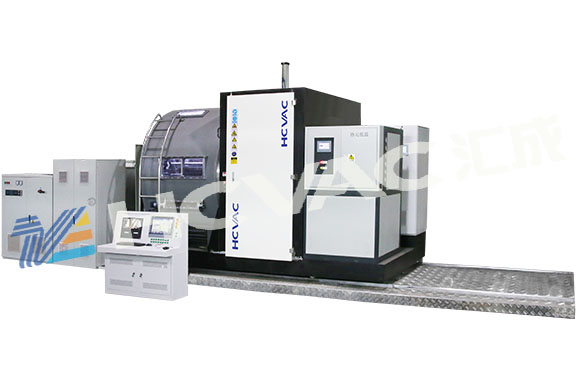Coating by winding vacuum coating machine is a technology of continuous coating on flexible substrates by means of physical vapor deposition. Coating on the surface of flexible substrates has two functions: one is functional and the other is decorative. The so-called functionality is to use different coating methods to coat semiconductor films, metal films, optical multilayer films and other flexible substrates on flexible substrates such as plastic films, paper, metal tapes, and cloths, which can not only improve their surface hardness, mechanical strength and water resistance. It can also increase oil resistance and solvent resistance, improve aging resistance, and have electrical conductivity, reflection, absorption, insulation, barrier properties, and anti-static properties, so that these flexible materials have some special functions.

Common winding vacuum coating machines can be divided into: evaporation winding coating, magnetron sputtering winding coating and combined winding coating according to the working principle. Among them, the evaporation winding coating is divided into three types: resistance heating evaporation, induction heating evaporation and electron beam heating evaporation; magnetron sputtering winding coating is divided into DC sputtering and intermediate frequency reactive sputtering; combined winding coating is divided into Resistance evaporation and magnetron sputtering combination, resistance evaporation and e-book evaporation combination, electron beam evaporation and magnetron sputtering combination and other forms.
The winding
vacuum coating machine has made great progress in the past 30 years. The coating products are widely used in decoration, packaging, capacitors and other fields, and can be coated with optical, electrical, electromagnetic, conductive and other thin films. The substrates used are PE, PET, PI, PP, OPP, BOPP, paper, foam and cloth. Generally, the water content of plastic-based film materials is 1% to 2%, and the water content of paper is higher, generally 5% to 7%. After coating and drying, the water content is still 3%. Due to the high moisture content of the substrate, the coating chamber has developed from the initial single-chamber to the current dual-chamber or multi-chamber structure. Evaporation sources can be resistive, inductive, electron beam, and magnetron sputtering. The double-chamber structure is widely used, and its advantages are: 1. It can evaporate paper substrates with a large amount of air out, and can ensure the quality of the coating. A large amount of gas evolved from the paper is expelled from the winding chamber. Because the narrow gap between the winding chamber and the evaporation chamber is very small, the released gas is not easy to enter the evaporation chamber; ② the single-chamber structure must be equipped with a larger exhaust system to ensure the working pressure during evaporation, and The vapor deposition chamber in the double-chamber structure has a small gas volume, and can be equipped with a small air extraction unit, which reduces the equipment cost and saves energy; ③The winding chamber and the vapor deposition chamber are pumped separately, which can shorten the pumping time.



